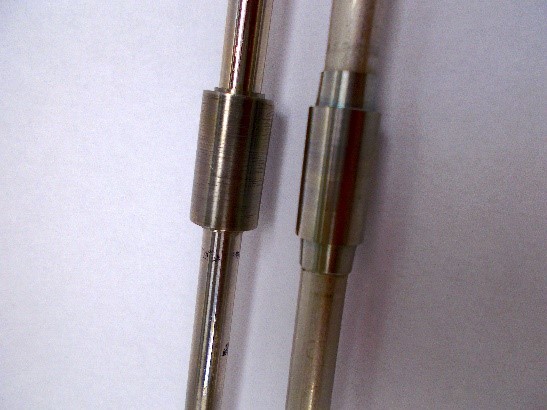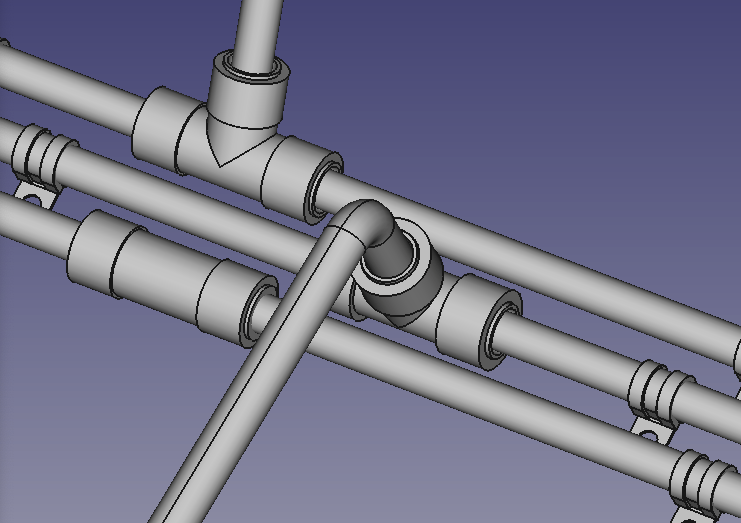Small team use ‘smart metals’ to create groundbreaking coupling solution
How do you create a success story with a small company? Project SCouP demonstrates how a two-person team with the support of ESA’s ARTES Advanced Technology programme delivered a real-life ‘Scoop’ – creating a European first using shape memory alloy technology.
“This was a shot in the dark!” says Mario Toso, Technical Officer at ESA. “An older product existed outside Europe but nobody here had considered developing a similar idea – probably because it’s very difficult to do. But we decided to rise to the challenge. With only three people in total on the project we knew from the outset that it was likely to be high risk, high reward. It’s part of ESA’s role to support small companies in taking these sort of risks – we decided to go for it!”
“I knew I could realise this project by teaming up with another partner,” says Christophe Promper founder of ChP Consult SPRL. “Shape memory alloy specialist Rudy Stalmans and I put together a technical and commercial proposal for project SCouP (Shape memory alloy COUplings for Pipes). I think we may have won in spite of being small because we answered with the quality ESA was looking for. We also had the backing of our National Delegation, having convinced them that the project was not just R&D but also the first step towards a new industrial activity in Belgium – that it would result in job creation. In December 2015 we won the Invitation to Tender.”
The nuts and bolts of the project
In every satellite propulsion subsystem, there are critical pipe welds, which are very costly to perform – as well as to repair if they have not been perfectly executed. Repair work can also be tricky, due to inaccessibility or other reasons – necessitating X-ray inspections/3D-scans or specialised orbital welding.
“Performing the final weld to join parts on a fully-assembled spacecraft is a highly critical and delicate operation,” says Toso. “There is also the risk of generating particles inside the pipeline, which might clog filters. It therefore requires a highly-skilled welder – the type whose certificate has to be regularly renewed – most companies simply don’t have personnel with this skillset.”
Shape memory alloy or ‘smart metal’ technology
The team knew that connecting pipes with a technology using shape memory alloys (an alloy that can be deformed when cold but goes back to its original or ‘remembered’ shape when warmed up) was an attractive alternative to welding. When the alloy sleeve cools, it fits neatly over the joint making it ‘leak-proof’.
“Welding is the standard solution but when its disadvantages become restrictive it’s desirable to avoid challenging welds,” says Promper. “When you unbox this new component, it has an internal diameter a little larger than the pipe. You place it directly, you warm it then it starts shrinking and crimps the pipes together. With SCouP you can also join pipes of different materials – such as titanium and stainless steel. In these cases you’d normally have to use a transition joint which is expensive and quite long. For manufacturers in the nanosat industry this is significant disadvantage as a few centimetres is huge for them.”

The goal – and the achievement – was much more than developing a European equivalent to existing technology. Toso explains: “From the outset we knew that the best outcome was re-engineering the technology – this is all part of the success story. Success involved taking a fresh look at the challenges and the potential solutions that would best meet the needs of modern communication satellites.”
Promper: “We were really happy with the follow-up by ESA on the project. The technical officers were extremely qualified, helping to define the most relevant test plan as well as being pragmatic in the validation process.”
The success of this ARTES activity has already raised the interest of all of the European primes and NewSpace actors with possible use in CubeSat-like applications.
“Companies entering the field of constellations aim for very ambitious satellite production rates but typically lack the personnel able to perform such welds – or the resources necessary for the mandatory training. SCouP becomes a groundbreaking solution for all these cases,” Mario Toso, Technical Officer, ESA.
“We have had strong national and regional support in terms of incubation,” says Promper. “This is ongoing to develop the product line.” Moreover, technology transfer opportunities have opened to ‘spin-off’ the technology to non-space applications – such as the hydraulic lines of helicopters as well as medical applications. These are currently being pursued with the help of the WSL (regional incubator), Belgian ESA BIC (through "Galaxia Space Innovation" represented by IDELUX) and the Technology Transfer office by the company SCouP srl, which was founded by Christophe Promper and Rudy Stalmans for this purpose.



